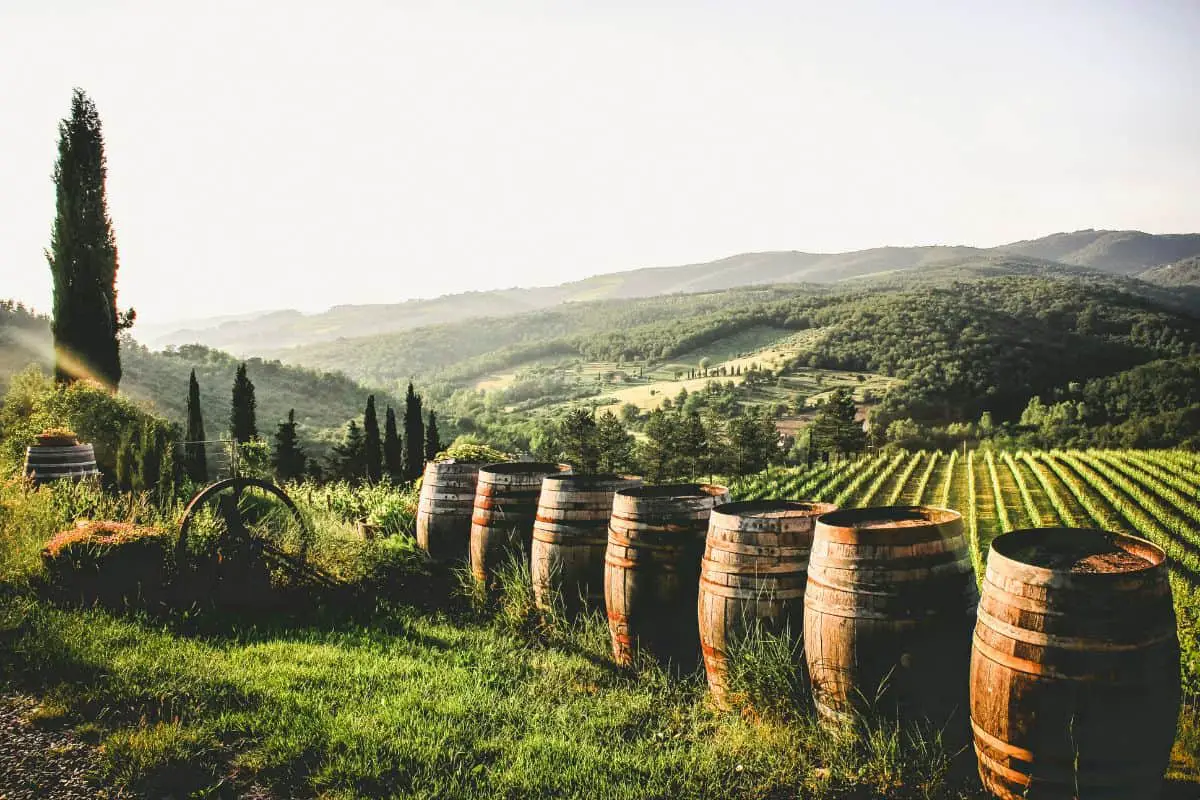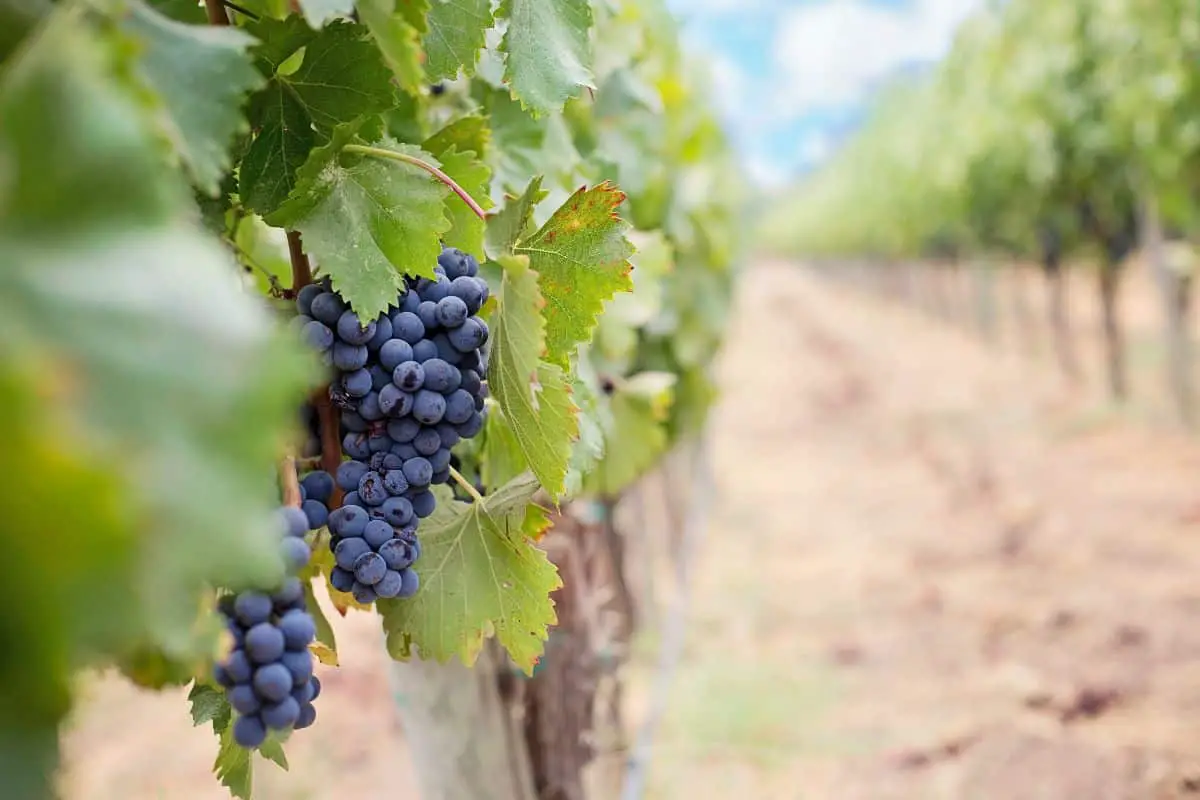Grapes are grown on land that is designated as a vineyard. Grapes are grown on vines supported by trellises, which are structures made of posts and wire.

Until they are ripe enough for picking or harvesting, grapes stay on the vine.
A grape’s use determines how it is farmed. Some grapes are raised specifically to be marketed as table grapes in grocery stores.
Those are the grapes which you might get at the supermarket.
Some grapes are raised specifically to be shipped to wineries for winemaking. For the purpose of making raisins, other grapes are planted.
Grapes are simply plucked, then sun-dried until they get shrivelled to make raisins. This article will discuss vineyards, what they are and how they work.
What Is A Vineyard?
Should you happen to reside in a wine-producing country, you are likely already accustomed to seeing fields of grapes that are grown exclusively with the goal of making wine or perhaps wine vinegar.
Land areas can be set aside for a vineyard, and in some countries around the world, the ground is divided into portions for the cultivation of various grape varieties.
For example, a vineyard might set aside a portion of its land for the cultivation of Pinot noir grapes, another for Chardonnay, and a third for Zinfandel.
Vineyard workers divide the portions when it’s harvest time for the grapes, which could have somewhat varying harvesting times, to avoid confusion over which grapes will produce certain varieties of wine.
How Do Vineyards Work?
A vineyard is a hub of activity, save for the winter months as grape vines are dormant.
Daily workers in the US, primarily migrant and immigrant labourers, tend to the grapes as they mature, applying fertilisers or chemical treatments as necessary and inspecting the grapes for issues like mould growth or bug presence.
If wine is produced on-site, the laboratory personnel are an unnoticed component of the vineyard.
They examine the chemical makeup of grapes as they develop to identify when they are ripe and what modifications might be required after the grapes are pressed, in addition to evaluating the chemical characteristics of wine that has already been bottled.
After that, they will determine whether the grape juice is ready to be distributed as wine. Enologists are chemists who produce wine and serve as analysts.
What Other Functions Do Vineyards Have?
Vineyards may also engage in the direct sale of wine from a tasting area or provide tours of the winemaking facility.
Many wineries offer visitors the chance to sample their various varieties in addition to selling wine to larger distributors and selling wine internally.
This implies that a vineyard connected to a winery can have chemistry personnel, customer service staff, marketing people, and distribution staff.
In larger wineries, positions as tour guides or tasting specialists are prevalent.
Because they are so small, some wineries only sell to customers that come to them directly, such eateries.
As a result, marketing expenses are reduced and the vineyard is able to make more money from the individual sales of wine.

Not all wineries produce or market wine. The simple act of cultivating wine grapes and selling them in huge quantities to bigger wineries constitutes a developing market.
In fact, some wineries that cultivate their own grapes on the property still use grapes from other nations or areas.
The likelihood that at least a portion of the grapes were not farmed on-site increases with the size of the winery.
Problems With Vineyards
Some people enjoy the appearance of vineyards, particularly in the fall when the grape leaves change orange, yellow, and purple, in various regions that have been classified as wine countries and where a majority of wine is produced.
Others say that because it is a more lucrative farming industry, too many vineyards may displace other crops.
The overwhelming amount of vineyards that have supplanted apple, other fruit, and walnut orchards is one issue raised by many residents of Sonoma County, California’s wine region.
Most of the Gravenstein apple, which is widely regarded as one of the best baking apples, was grown in Sebastopol, California.
Since so many apple plantations have been destroyed to make room for vineyards, it is now classified a slow food.
Vineyards can also be unsustainable and bad for the environment.
Sustainability And The Wine Industry
The definition of sustainability throughout the wine industry is changing.
The fact is that vineyards need to be at the forefront of land care if they want to maintain the land that provides us with the grapes we want to fill our glasses.
Sustainability increasingly includes undoing damage as well as avoiding it as conventional farming practices (spread across agriculture-based businesses) degrade the land and contribute to global warming as well as produce more and more intolerable conditions for growers.
What Makes Vineyards Unsustainable?
The majority of winemakers cultivate their grapes using traditional agricultural methods, many of which are unsustainable and erode the soil from which the grapes are grown.
Conventional farming methods necessitate a high reliance on pesticides, herbicides, and fertilisers since they destroy the natural ability of the farmland.
The relationship between agriculture and climate change is quite obvious.
It is more difficult for the soil to function and nourish plants when conventional agricultural methods are used, including monocropping, extensive chemical usage, and the employment of industrial machinery.
Additionally, those same activities hinder the soil’s ability to absorb greenhouse gases, which contributes to climate change.
What Does A Sustainable Vineyard Look Like?
Vegetable gardens, trees scattered across the property, composting piles, roaming animals, and an abundance of birds and insects are all signs of a sustainable vineyard’s most valuable asset: healthy soil.
More than merely their farming methods, sustainable vineyards also target broader resource conservation and social justice.
Vineyards that adhere to certain norms can be distinguished from those that don’t.
Final Thoughts
Vineyards have a long and important history and provide the goods we consistently purchase from supermarkets.
Sustainable wine production and vineyards have a twofold future.
On the customer side, we’ve observed a trend toward sustainability in behaviour. Every year, customers seek more from the businesses they patronise.
Consumers are increasingly demonstrating an awareness that we only have one planet and that we must act globally to sustain it.
We simply want things that are ethical and sustainable, whether they be wines, fruits, or clothes.
- How to Learn Wine Tasting: Essentials for Beginners - March 10, 2024
- How to Learn to Like Wine: Cultivating an Appreciation for the Vintner’s Art - March 10, 2024
- Thanksgiving Sangria: A Flavorful Twist to Your Holiday Table - August 27, 2023
